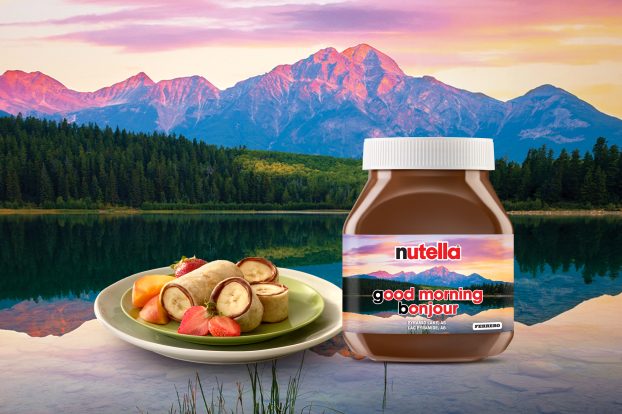Some of the most notable campaigns to run in out-of-home over the past year actually promoted other media – namely, radio and television. On the pages that follow, we look at how broadcasters have employed various out-of-home media – everything from billboards to wild postings – to build their brands.
It could probably be argued that The Weather Network shouldn’t be using out-of-home for its current brand campaign.
It could. But if a convincing case exists, John Lee hasn’t heard it.
As president of Holmes & Lee, the Toronto agency responsible for developing the campaign, Lee was adamant from the outset about the choice of primary medium.
‘We told them, ‘You must be outside,” Lee says, recalling the argument that he and partner Peter Holmes made in their preliminary discussions with the client. ”You must be able to take advantage of the environment, and actually play off the weather in the creative.”
The campaign, the most ambitious ever undertaken by The Weather Network, launched at the end of December. It is scheduled to run for 16 weeks in the Toronto, Calgary and Vancouver markets.
In addition to billboards and transit shelters, the campaign also incorporates a 30-second tv spot, currently airing on CTV Sportsnet, CTV News 1, Outdoor Life Network, wtn, Life Network and The Discovery Channel, as well as The Weather Network itself.
The goal, says Rick Ridgway, senior vice-president and general manager of The Weather Network, is to build the station’s brand, thereby promoting trial and encouraging people to tune in more frequently, and for longer periods of time. Ultimately The Weather Network wants to position itself as the definitive source for weather information in Canada – always accurate, always reliable.
‘There’s a lot of competition out there for weather impressions,’ Ridgway says. ‘Not just from other specialty channels, but also from conventional broadcasters in local markets, a lot of whom are investing substantially in their weather coverage. So we need to reinforce the brand and grow our audience.’
Lee agrees.
‘We know that the network has really strong basic awareness,’ he says. ‘But they’re involved in a very intense competitive set. So we had to focus on The Weather Network as a brand, and figure out a way to define and elevate that brand. We had to give the brand life.’
The creative strategy developed by the agency underlines The Weather Network’s authoritative quality, while using humour to invest the station with some personality.
One of the billboard executions, for example, features an arrow pointing to the sky above, with the words ‘Told you so.’ Another reads, ‘All new episodes.’
‘The beauty of this [approach],’ says Lee, ‘is that the sky itself becomes part of the ad. And it creates a sense of topicality, because the advertising is fresh every single time you look at the execution.’
Because the billboard creative is meant to play off the weather itself, the selection of faces was crucial. All boards had to be either freestanding, or positioned on rooftops, to ensure the full effect.
‘We needed the sky as background,’ explains Laura Gaggi, president of Toronto-based Gaggi Media Communications, which handled the media planning and buying. ‘So I got in a van and drove to all the locations. We handpicked those suckers, every one of them.’
While the transit shelter ads don’t use their backdrop for effect in the same way as the billboards, they are quite similar in tone, with lines such as ‘We know what you’ll be wearing tomorrow,’ and ‘Where the term ‘new season’ actually means something.’
Graphically, the outdoor ads are exceedingly clean and simple, employing large, bold black type against a solid background of bright yellow. Lee says the colour choice is meant to evoke the look of an emergency road sign, in order to communicate a sense of urgency.
The target for the campaign is adults 25-54, with a skew toward upscale ‘active planners’ – people whose lifestyle involves weather-dependent outdoor activities such as boating, golfing and skiing. Gaggi says the media buy in all cities maximized exposure to these folks.
While it’s too early, at this point, to gauge the effectiveness of the campaign, Ridgway says the network is convinced that both the creative approach and the media strategy are sound.
‘Outdoor is the most cost-effective medium to use to support the campaign in these three major markets,’ he says. ‘And it simply makes sense to be in outdoor, because that’s where weather most impacts us.’
Assuming that the current strategy delivers results, the network’s hope is to build on the campaign over the next two to three years.
Lee, for one, considers the creative approach flexible enough to allow for any number of variations on the theme. ‘The campaign has legs,’ he says.
Also in this report:
– Signs of the times: Creatives pick their favourites in a less-than-stellar outdoor season p.19
– CFNY signals change with provocative campaign: New-rock radio station set out to attract new listeners without turning off core audience p.23
– CFRB tailors message with wild postings: Guerrilla tactics reinforce nature of CFRB as provocative, on-the-street medium p.25























